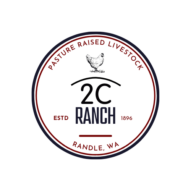RED DEVON CATTLE

The Devon Cattle Breeder’s Association of Australia breaks down into simple categories why we love this breed:
Efficiency in Devons
The most important attribute for efficiency in beef production is fertility. However, efficiency is also influenced by many other factors in which Devon cattle excel.
Calving Ease
Devons have small vigorous calves which are usually born unassisted.
Milking Ability
Devon cows are renowned for high milk production resulting in heavy calves at weaning.
Mothering Ability
The Devon cow has excellent mothering ability which means calves have one of the highest survival rates to weaning.
Weight Gain, Maturity and Carcass
Devons combine rapid weight gain as well as adequate muscle and carcass characteristics, with the ability to fatten at an early age. When run in harsher conditions they have the versatility to grow out into heavy bullocks.
Feed Conversion
Cattlemen have found Devon cattle generally to be extremely efficient converters of grass to beef and this is evidenced by their ability to withstand extremes of conditions better than any other British breed.
Adaptability
Devon’s robust constitution has enabled them to flourish in the diverse environments of Australia. In the Australian Devon-Hereford Crossbreeding trial, it was proven that Devons not only excel on low nutrition but also grow as fast as Herefords on high nutrition.
Longevity
Devons are free from diseases such as eye cancer, are structurally sound, have extremely correct udders and have a robust constitution, which means they can be retained in the herd for more years than most other breeds.
Temperament
Devons are extremely docile cattle and therefore easy to handle and manage. They were a favorite breed for the bullock teams of the past and they settle into modern intensive feeding situations very well.
Fertility in Devons
Devons are one of the most highly fertile of all cattle breeds. Calving percentages in the high nineties can be expected on good nutrition. Because of high fertility, there is only a short time between calving and the next conception. This means shorter joining and calving periods. Keith Young from ‘Edendale’ near Kyogle, N.S.W. whose family has been breeding Devon cattle for more than 100 years, says “The biggest asset Devon cattle have to offer is fertility and we regularly have calving percentages of between 96% and 98%. ” Devon Bulls have large testicles and produce high-quality semen. The average-sized testicles of 148 mature Devon bulls measured randomly across Australia was 38.6 cm, compared with the all breeds average of approximately 36 cm. The significance of this is highlighted by the comment of Bob Gahan, District Beef Officer, N.S.W. Agriculture & Fisheries, Tamworth, “Testicle size is directly related to sperm count and hence has a significant effect on fertility. Also, important recent overseas research has proven that for every additional 1 cm. in scrotal circumference, the first oestrus of that sire’s female progeny will be 4 days earlier, which is a good indicator of lifetime reproductive rate.” Researchers from the New Zealand Department of Agriculture stated that “Devons have higher natural fertility. Heifers show oestrus at an early age, cows achieve high in-calf rates and bulls are active. The result is high fertility, together with their easy calving and good growth rates.”

